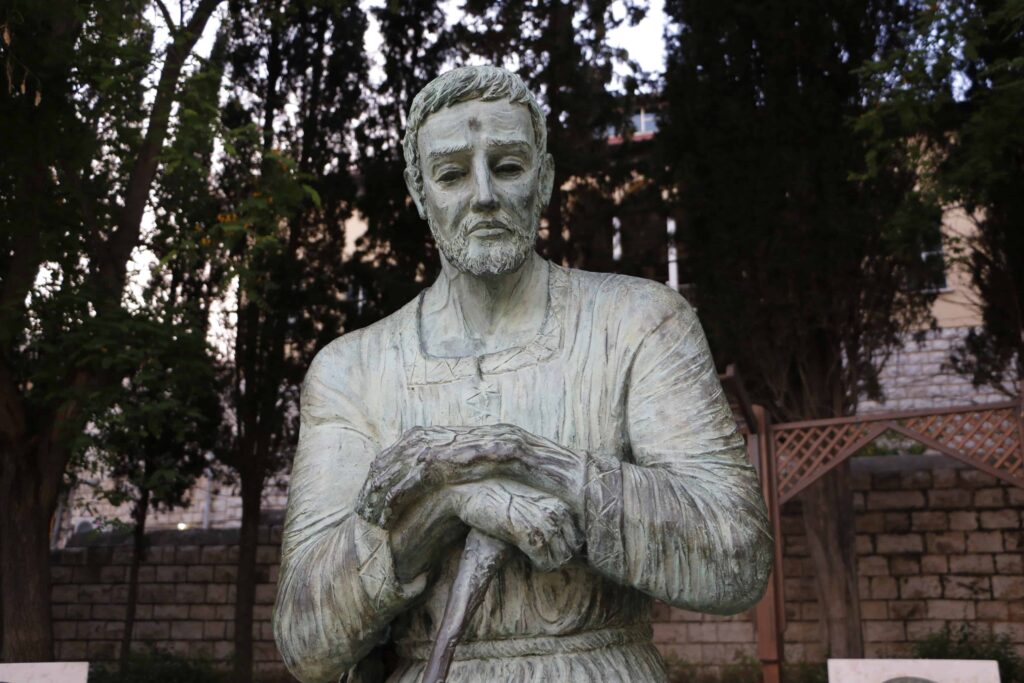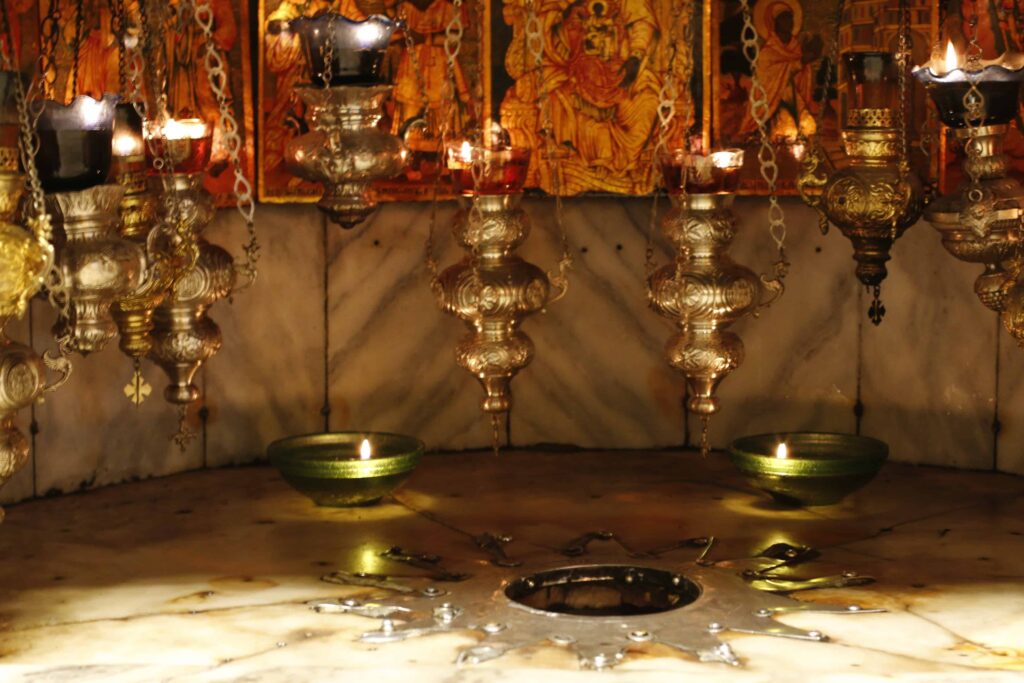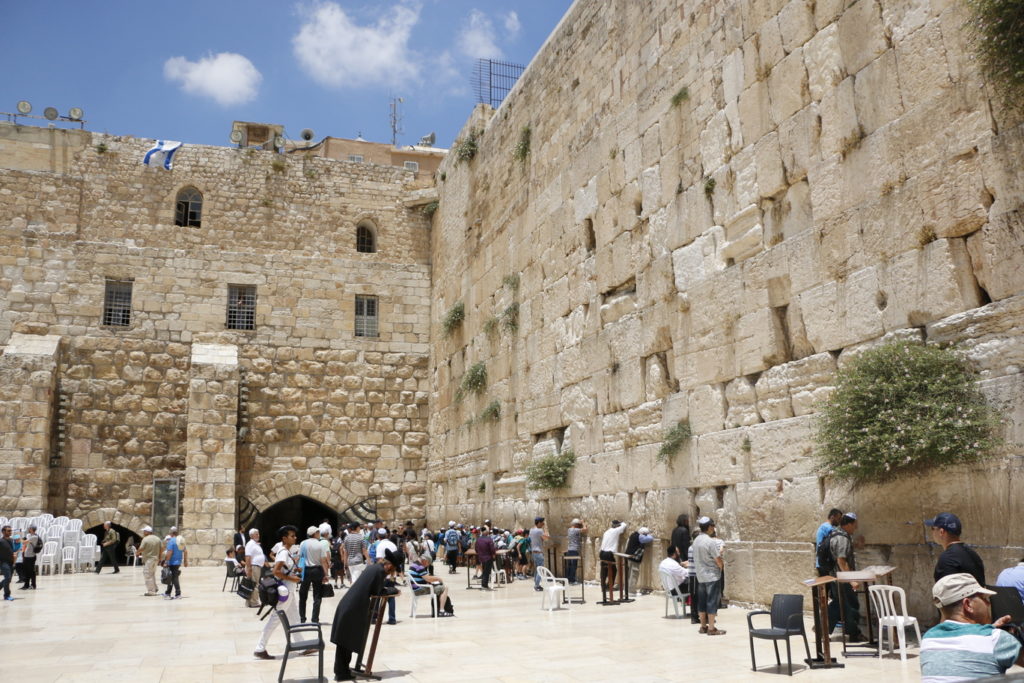
St. Joseph’s statue in Nazareth | Saxum Archive
Pope Francis has dedicated this year 2021 to Saint Joseph, father of Jesus and husband of Mary. It coincides with the 150th anniversary of the declaration of the Holy Patriarch as Patron of the Universal Church by Pius IX, the 8th of December 1870. So let’s explore the different Holy Land sites where we find his footprints.
Joseph, in Hebrew “God will add”, is a very inconspicuous character in the Bible. We know very little about his life, there are no references in the Gospel to Joseph and tradition holds that he passed away before Jesus’ public ministry began. However, he had a key role in God’s plan as the foster father of Jesus and husband of Our Lady.
Nazareth: Joseph’s Hometown
From the Gospels it is very clear that Joseph’s family origins are from Bethlehem. However, we can deduce from this source that he lived in Nazareth before he married Mary and that he established the Holy Family there when they returned from Egypt. In Nazareth today, near the Basilica of the Annunciation, you can visit the Church of St. Joseph. There we find a crypt with archaeological remains from what tradition has identified as the house of the Holy Family. The closeness of the two houses (the paternal house of Mary and Joseph’s) gives us an indication of how small the village of Nazareth was at that time. Some studies suggest that the village was a little larger than a soccer field.
Therefore, Nazareth would have had no more than 500 inhabitants at the time. Yet, it was just two hours walking distance to Sepphoris, the capital region, which was an urban area with strong Hellenistic influence and a large pagan population. During market days, people from neighbouring villages, such as Nazareth, would go to the city to sell their surplus harvest. Archaeological studies suggest that in and around Nazareth there was wheat, olives, dates, and olive oil production. It is likely that Joseph sold his products and services in this neighbouring major city.
Historically, the Galilee region, including Nazareth, came under more pagan influence than the Judean region. In first century Galilee, rural areas and villages were mainly inhabited by devout Jewish communities, while the urban centers had a broader pagan presence. In fact, this region was known as “Galilee of the gentiles”, an expression that is recalled in the Gospel. The Jews in the Judean region, which included Jerusalem and the Temple, were more vigilant to preserve their Jewish culture against outside influences and foreign invasions. These cultural differences created suspicion between the Galilean and Judean Jews which is also clear in the Gospels. “Search, and see that no prophet arises out of Galilee” (Jn 7, 52) is one of the arguments of the Priests and Pharisees against Jesus.

The star that marks the place where Jesus was born in Bethlehem | Saxum Archive
Bethlehem: The City of David
We know that Joseph was from the lineage of David, because it is highlighted in the genealogies provided by the Gospel. This was a common practice of ancient writers to introduce important male characters in their narratives. Thus, Jesus, as son of Joseph, is part of this royal dynasty that started with David.
Bethlehem is located in the region of Judea which was controlled by the tribe of Judah (Jos 15). Though small and insignificant for centuries, Bethlehem played a key role in salvation history. David, who started life as a little shepherd and became Israel’s greatest King, was born there (1 Sam 16). Later on, the prophet Micah announced that Bethlehem would be the place in which the Messiah would be born (Mic 5, 2). After that, Bethlehem is not mentioned in the Bible until the Gospel narratives announcing the birth of Jesus.
“Joseph also went up from Galilee, from the town of Nazareth, to Judea, to the city of David, which is called Bethlehem, because he was of the house and lineage of David, to be registered with Mary, his betrothed, who was with child” (Lk 2, 4-5). We have heard this story many times and, since then, Bethlehem has never been forgotten again. It became the cradle of the Messiah, as the prophets had announced. From the first centuries, the place of Jesus’ birth has been known and venerated which is identified today inside the Basilica of the Nativity. Origen, an early Christian theologian, said in the 3rd century that even people who had no faith recognised the place: “In this cave, it is said, was born that Jesus to whom Christians admire and adore”.
Jerusalem: The Temple
The Holy Family went to the Temple of Jerusalem forty days after the birth of Jesus to fulfill what was commanded in the Law of Moses; the purification of the mother and the redemption of the firstborn male. As any devout Jew, Joseph would have gone on a pilgrimage to the Holy City for the feasts of Passover, Pentecost, and Tabernacles. When Jesus grew older he also went with his parents for these celebrations. It was during one of those occasions that he was lost in the Temple for three days.

The Western Wall in Jerusalem is the only part of the Second Temple that has survived until today | Saxum Archive
King David conquered Jerusalem around the 1000 BC and it had been the capital and religious center of the kingdom ever since. Solomon, King David’s son, who succeeded his father, built the first Temple on top of mount Moria. According to tradition, this is the same mountain upon which Abraham took Issac to sacrifice him to the Lord. Nebuchadnezzar, the Babylonian emperor, destroyed the city and the Temple during his conquest and sent the Jews into exile, the famous exile in Babylon. With the Persian conquest, the Israelites were allowed to go back and rebuild the Temple. This second Temple was the one that Herod the Great enlarged and enriched. During the lives of Joseph and Jesus, workers continued finishing the construction.
Knowing the historical context can help us to come closer to Joseph, which the Holy Father wants all of us to do this year. In the words of the Pope, Joseph was: “a beloved father, a tender and loving father, an obedient father, an accepting father; a father who is creatively courageous, a working father, a father in the shadows.”
References:
- In the footprints of our faith, Jesús Gil and Eduardo Gil
- In the footsteps of Jesus. A chronicle of his life and the origins of Christianity, Jean-Pierre Isbouts
- Apostolic Letter of the Holy Father Francis: “Patris corde” (With a father’s heart)
